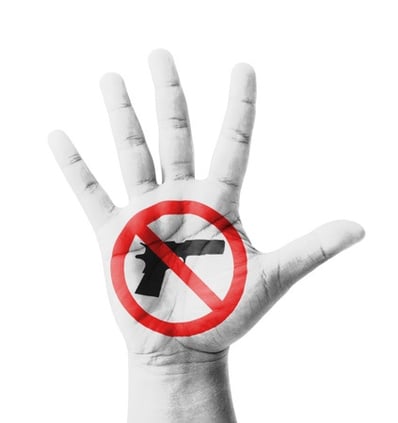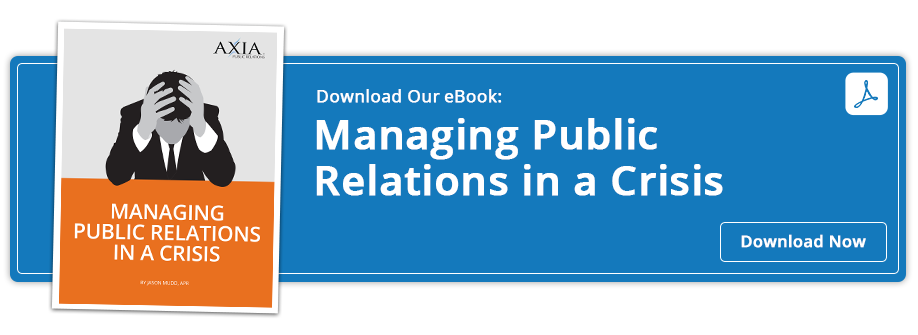 What to do about the swelling shooting epidemic
What to do about the swelling shooting epidemic
It’s not surprising that gun shops are doing brisk business, or that parents are turning more and more to home schooling. It’s because crisis situations like terrorist threats, criminal attacks and active shootings are becoming a pervasive headline throughout the United States.
Most people don’t expect to be at the mercy of an active shooter. Although mass shootings are rare, the number of incidents in which a gunman has opened fire on a crowd has doubled in the last seven years, primarily in businesses and schools, based on a study by the FBI.
The way a company responds in the initial hours of a crisis such as an active shooting is critical to its employees’ and the public’s opinion of the brand. Jason Mudd, president and CEO of Axia Public Relations, notes that public relations practitioners are not responsible for fixing public perception issues created from these crises. Instead, PR’s role is to get the company through the situation with as little damage as possible to its reputation, credibility and key relationships.
How do PR pros craft their messages to all of their audiences? According to Mudd, the best response is to have a crisis communications plan already in place – even for such a remote possibility as gun violence in the workplace. When an emergency happens, communication is a top priority: If business is disrupted, customers will need to know the implications, employees and families will want to interact with company leaders and members of the community will want to understand what’s happening in their backyards.
What tools will you need to promote an effective campaign in the wake of a crisis?
A strategic action plan
A large part of what PR professionals do involves crisis management. You should have an emergency action plan from contact information to step-by-step handling of crisis scenarios. You’ll need to reach many different audiences with information customized to their interests and needs.
Media relations
Depending on the severity of the incident, you will need to master your audience. The media will be your first and most important connection. There may be numerous requests for information – local, regional and national. Keep in mind that employees, customers, board members and other partners will all view your messages.
Trained spokespeople
You will need an articulate, consistent voice in the form of a well-trained spokesperson to explain the crisis and to be the contact for the media, employees and high-level leadership alike. A quick messaging platform would be handy. Know your complete story so you know which direction to steer your messaging.
A designated liaison director/trauma team
All information should funnel through your PR team or liaison director. The people in these roles will already have good communication lines established with key staff as well as being on the lookout for disgruntled former staffers.
Your response following a shooting crisis will be more effective with a leader who knows all of the company faces and who has a team already in place. For example, a large corporation with cultural differences has to synchronize its messages across different platforms and will need a leader and organized team.
Integrated social media
Not surprisingly, managing public relations disasters isn’t what used to be. Social media and the growth of SEO tactics have reshaped our response to violence outbreaks in every way.
Today there are myriad channels to consider: You can post information on your corporate blog, send messages through your social media channels, issue a press release or a combination of all three. Keep in mind your channels’ basic differences: Social media is ideal if you want to be able to have an in-depth conversation, a blog works well if you want to control conversations around a message and a press release works best when issuing a brief, straightforward announcement.
Prepared statements (with corresponding timelines)
A thorough crisis communications plan will customize statements for various situations, including shooting crises. Companies should be posting on all of their social platforms with accurate, timely and brief messaging. The PR team should closely watch the story unfold on social media in the first few hours after the incident. You must customize your responses to each audience, including consistent messages through texts, emails and social media posts. You want to emphasize your company’s legacy of success, values and commitment to service.
Crisis Tips
-
Have a crisis management plan and update it annually.
-
Assemble a trained crisis management team.
-
Understand the business impact and how your decisions will affect your company, revenue and brand reputation.
-
Craft specific messages, including content for dark web sites (sites as-yet invisible to the public) and templates for crisis management statements.
-
Ensure that your legal department approves all content.
-
Include a section about crisis communication in your company’s social media policies.
Axia Public Relations has the necessary expertise and tools to serve as your PR firm. Contact us today or download a copy of our Managing Public Relations in a Crisis e-book to learn more.

Erica Cottrill is a PR strategist with 20 years of experience. She specializes in crafting stories via blogs, magazines and web sites.
Featured image credit: 123rf.com
Topics: public relations, crisis communications, shared media


Comment on This Article